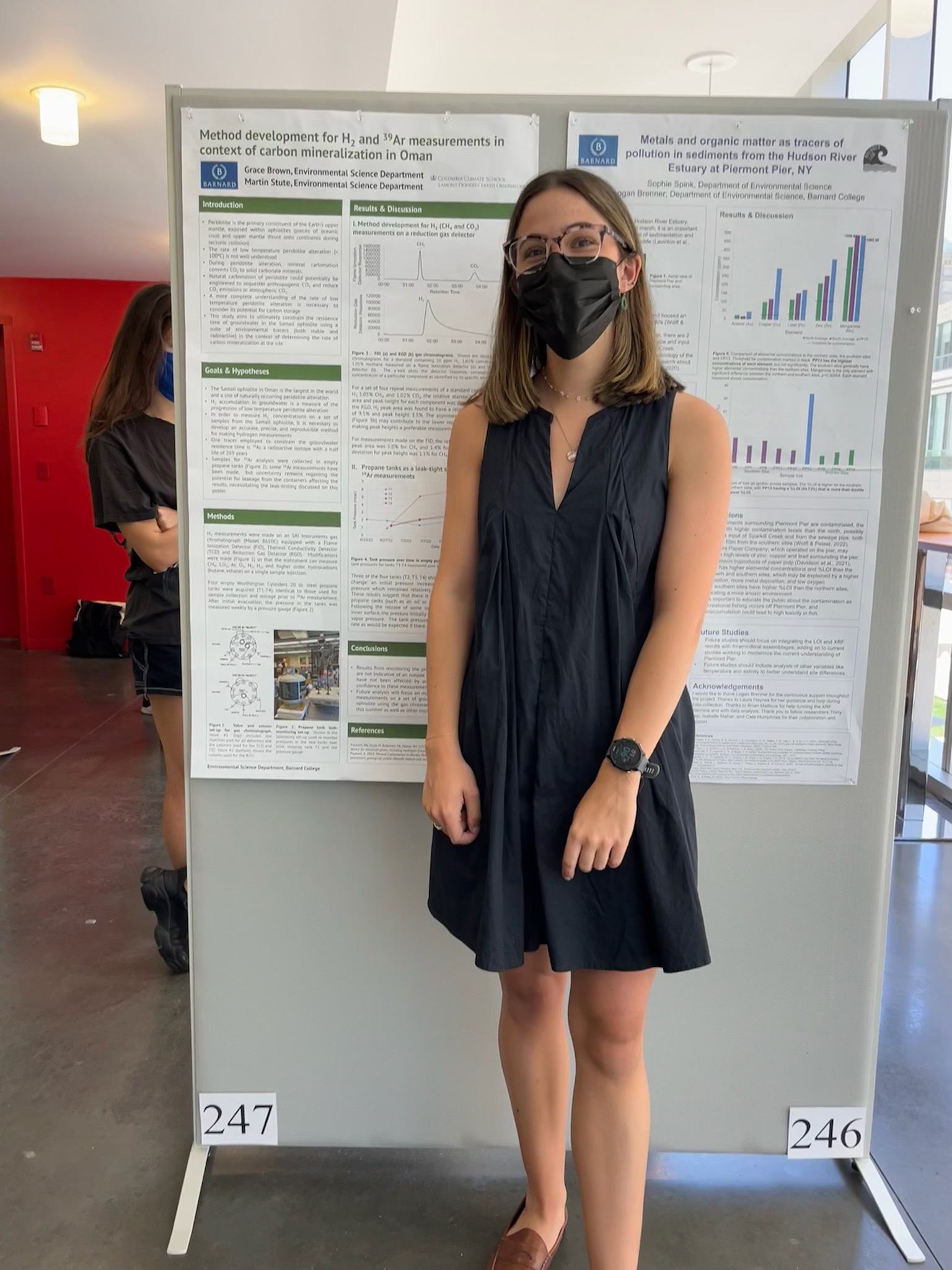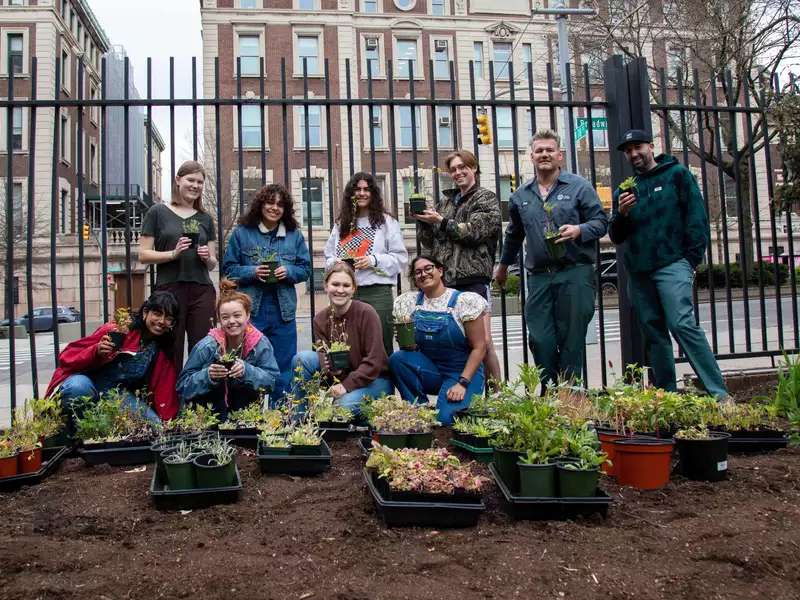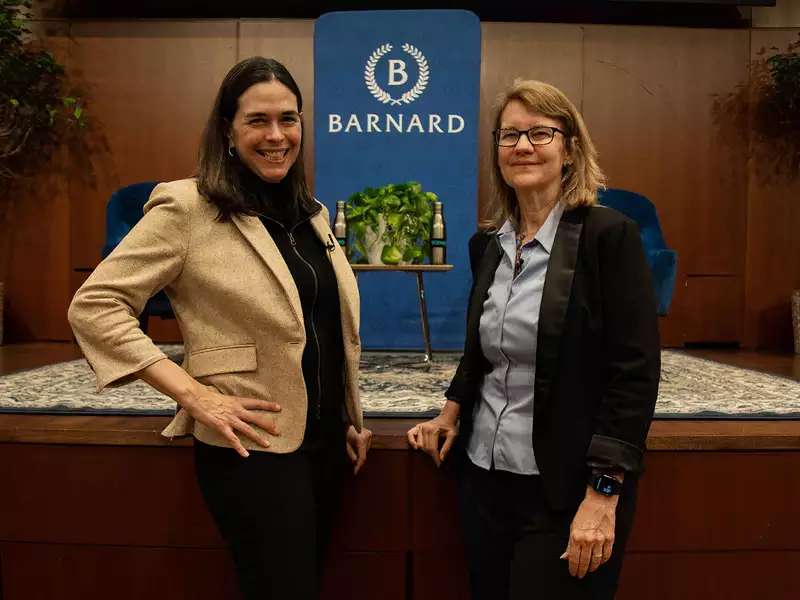
Climate science was not on Grace Brown’s mind when she decided to attend Barnard. The senior, who grew up in Westfield, New Jersey, had always gravitated toward outdoor conservation activities. Yet when she came to Barnard, she was considering majoring in political science. Her environmental studies courses and Barnard’s access to Columbia Climate School drew Brown into a new area of academic exploration.
Last spring, when Brown, who is now an environmental science major, was looking for a project for her senior thesis, she asked for suggestions from her professor and adviser, Martin Stute, the Alena Wels Hirschorn ’58 and Martin Hirschorn Professor in Environmental and Applied Sciences and the co-chair of the Department of Environmental Science. Stute is a leader in the area of hydrology and groundwater studies and has also been advancing a pivotal climate science research and development area: carbon capture and storage.
Stute needed help with an ongoing, high-profile project in Oman. He brought in Brown, who only needed to go as far as Palisades, New York, and Columbia’s Lamont-Doherty Earth Observatory to be part of the groundbreaking science. Once an elusive goal, carbon capture and storage — using science to remove carbon dioxide from the air and then stow it safely away — is now considered an important, emerging technology, critical for helping reduce greenhouse gas emissions, which, in turn, can help to solve the greater climate change crisis.
In this “5 Questions With …,” Stute and Brown talk about the Oman project and the promise of carbon capture.
In Conversation With Professor Stute:
What’s involved with carbon capture and sequestration?
In order to limit the effects of climate change, we need to not only cut back on our greenhouse gas emissions (mostly CO2 and CH4) but also take out some of these gases that we have put into the atmosphere. Carbon, in the form of CO2 and CH4, can be captured at the source, for example — at a power plant or directly from the air — and then stored in plants, industrial materials, or in subsurface pores and cavities. I am working on one of the safest ways to store CO2 in the subsurface using a process called carbon mineralization, in which CO2 is dissolved in water, pumped into reactive rocks such as basalts, where the CO2 is then converted to solid carbonate minerals, similar to limestone. I was part of an international team that demonstrated this process in a field application in Iceland.
What’s happening in Oman, and how is Barnard involved?
This project is part of a large international research program that explores the geochemistry and microbiology of an ancient uplifted seafloor in the desert of Oman. Besides being used to study basic biogeochemical processes, this formation could also store vast quantities of CO2, similar to the basalts in Iceland. A key question of the study is how fast water circulates in this formation. Our study — funded by the National Science Foundation (NSF), in collaboration with California State University, Sacramento, and the Oman Drilling Project — uses substances naturally occurring in groundwater at very low concentrations called “tracers,” such as radiocarbon, tritium, and noble gases, to determine how long the water has been underground and how fast it moves. This information is crucial for determining chemical reaction rates and how this formation could be used for CO2 storage.
How far are we from removing carbon dioxide from the air and storing it away safely?
The capture and storage of large CO2 sources are well understood and economically feasible. Free-air capture is still expensive; large-scale demonstrations must be developed and deployed.
However, many commercial carbon capture and storage plants are now operating worldwide. In fact, a startup company called 44.01, which received last year’s Earthshot Prize — a competition that recognizes and supports solutions to the world’s environmental challenges — has begun experimental CO2 injections in Oman. All this is not to say that carbon capture and storage is the silver bullet that will solve our greenhouse gas problem. It is just one approach that needs to be taken if we want to limit the worst effects of climate change. We still need to move to renewable energy sources as quickly as possible and transition to a sustainable economy.
Going into the lab and contributing to research, even in a small way, has shown me that researchers are working hard to understand what we need to do to limit the threat of climate change and how we can do this in practice.
In Conversation With Brown:
What surprised you most about the Oman project and your work in support of it?
Last summer, we spent a lot of time in the lab modifying our different analytical instruments to enable us to develop techniques specific to measuring samples and collecting data for the project. While this kind of method development is a large part of the research process, I was surprised to get this kind of behind-the-scenes look at the more technical aspects of scientific instrumentation.
I [also] hadn’t realized how students can get involved with and contribute directly to groundbreaking projects at Barnard and within the Department of Environmental Science. I’ve found that through the senior thesis and other opportunities available to us, students are really able to make an impact and contribute to extremely relevant research. It’s been very exciting and rewarding.
Does being so involved with emerging research make you more hopeful about the potential to lessen the threat of climate change?
Yes, I feel more hopeful about the future. Going into the lab and contributing to research, even in a small way, has shown me that researchers are working hard to understand what we need to do to limit the threat of climate change and how we can do this in practice. I think a major factor contributing to pessimism about climate change is the feeling that there’s nothing we can do about it, so I [am] much more optimistic when I can take action.






